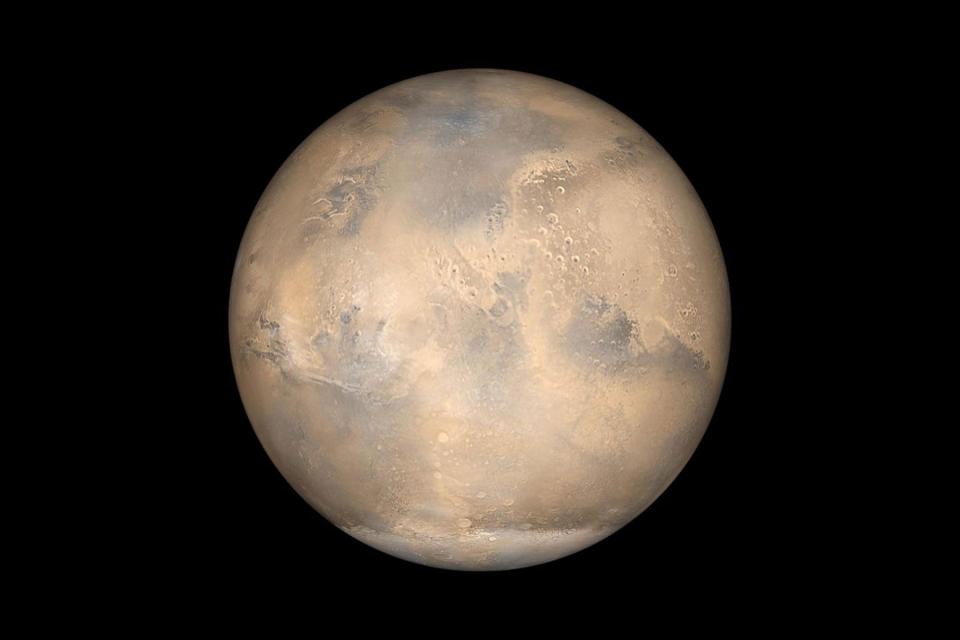See Mars at Its Brightest and Multiple Meteor Showers in the Night Sky This Month
These stargazing events will end 2022 with a bang.

NASA/JPL/MSSS
It’s been a jam-packed year of astro events, from last-chance eclipses to a history-making asteroid crash — and the fun’s not over yet as December’s meteor showers and planet sightings will end the year on a high note.
Even better: aurora-borealis activity is on the rise thanks to a flurry of storms and the sun’s powerful new solar cycle. Here’s where to see the northern lights for yourself.
Ready to stargaze? Here are the best astro events of December, including where and when to see them.
Dec. 8: Mars at Opposition
If a Mars sighting is on your bucket list, this is the month to make it happen. According to BBC’s Sky at Night Magazine, December 2022 promises the best Mars viewing until January 2025. There’s no better time than around 1 a.m. ET on Dec. 8, as Mars reaches opposition — when the red planet lies opposite the sun, close to Earth, and appears at its brightest. To see Mars in detail, you’ll need a telescope; binoculars will make Mars brighter and bigger, but most are not powerful enough for surface detail.
Dec. 13 – 14: Geminid meteor shower peak
The year’s meteor shower extravaganza continues with the Geminid meteor shower, an event known for bright white and speedy meteors. According to EarthSky, the peak will hit overnight between Dec. 13 and 14, around 2 a.m. At peak, with no moon and a dark sky, you could see up to 120 meteors per hour. While we will have a waning gibbous moon (which means it’s more than half illuminated) it’s still worth heading out; some shooting stars are bright enough to overcome the moon’s glow. Scout a dark-sky location with wide-open sky views for the best meteor shower odds.
Dec. 21: December solstice
Dec. 21 marks the longest night and the shortest day of the year. The annual event occurs when the sun hits its southernmost point in the sky, according to EarthSky. The official solstice occurs just before 5 p.m. ET. From this point on, those in the northern hemisphere will enjoy a subtle increase in daylight minutes every day until summer. (Take that as your cue to plan that dream summer vacation.)
Dec. 21 – 22: Ursid meteor shower peak
The Ursid Meteor Shower is a signature late-December stargazing event. The activity peaks overnight from Dec. 22 to 23, but temper your expectations: The Ursids are notoriously mild. They produce up to five meteors per hour, according to Royal Museums Greenwich. The good news? This year’s Ursids occur during a new moon, which means it’s easier to see those shooting stars, especially in a dark-sky park with wide-open night-sky views.
Dec. 28: Conjunction of Venus and Mercury
End the year with a stellar planet observation: the conjunction of Venus and Mercury. According to EarthSky, the planets will be only 1.5 degrees apart just after sunset on Dec. 28 when Venus, the brighter planet will sit just below Mercury. The duo will appear toward the southwest horizon. Look up from the pair for yet another planet spotting: Saturn.
For more Travel & Leisure news, make sure to sign up for our newsletter!
Read the original article on Travel & Leisure.

